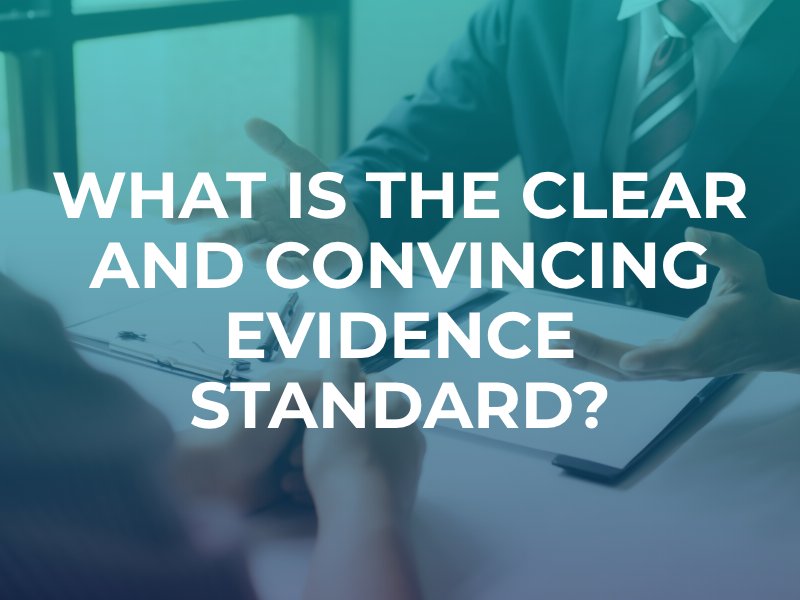What Is the Clear and Convincing Evidence Standard?
If you or somebody you love gets injured due to the careless or negligent actions of another person, it may be necessary to file a personal injury lawsuit to recover compensation for your losses. These proceedings can be incredibly difficult because they require the injured party to put forth enough evidence to prove that the alleged at-fault party was responsible.

In these cases, the “burden of proof” determines which party is responsible for putting forth evidence as well as the level of evidence they need to put forward to prevail with their claim. For most personal injury cases, the injury victim (the plaintiff) has the burden of proof. This will typically be established by putting forth evidence such as witness testimony, documents, or other objects and evidence. When the plaintiff has put forth all of their evidence, the burden then shifts to the defendant (the alleged at-fault party), who will then have the opportunity to provide evidence rebutting the plaintiff’s claims or supporting their own arguments.
If you are involved in any civil case, you should speak to an experienced attorney as soon as possible. The evidentiary standards we discussed here can be complicated issues and involve extensive investigation that most individuals do not have the resources to conduct.
Levels of evidence
There are various types of evidentiary standards that can be applied in civil cases, including personal injury cases, that determine the burden of proof:
- Preponderance of evidence
- Clear and convincing evidence
- Substantial evidence
Each of these levels of evidence has a different level of burden of proof attached. “Clear and convincing” evidence is when the burden of proof requires the plaintiff to prove that the particular fact in question is substantially more likely to be true than not. Some courts have described this standard as requiring the plaintiff to prove that that particular fact has a high probability of being true.
When is the “clear and convincing” standard required?
The clear and convincing standard has a higher burden of proof and will generally be reserved for claims that have special elements that need to be established. Some of the most common cases in which clear and convincing evidence is required include:
- Claims involving inheritances and wills
- Claims involving fraud
- Cases that involve family decisions such as withdrawing a relative from life support
Looking at these examples, we can see that clear and convincing evidence is required in legal claims when the risk of loss is relatively high. The standard will also commonly be used when one party involved in a civil case stands to lose a significant amount of money or property.
Do you need an attorney for these cases?
If you have a civil legal claim that will require clear and convincing evidence, you should speak to an attorney as soon as possible. When this type of evidentiary standard is applied, the matter will likely involve serious issues, high dollar amounts, high property value amounts, and more. The application of the clear and convincing evidence standard is going to result in an extensive investigation. Most people involved in civil claims that require clear and convincing evidence do not have the legal experience or resources necessary to properly protect themselves or obtain maximum compensation.